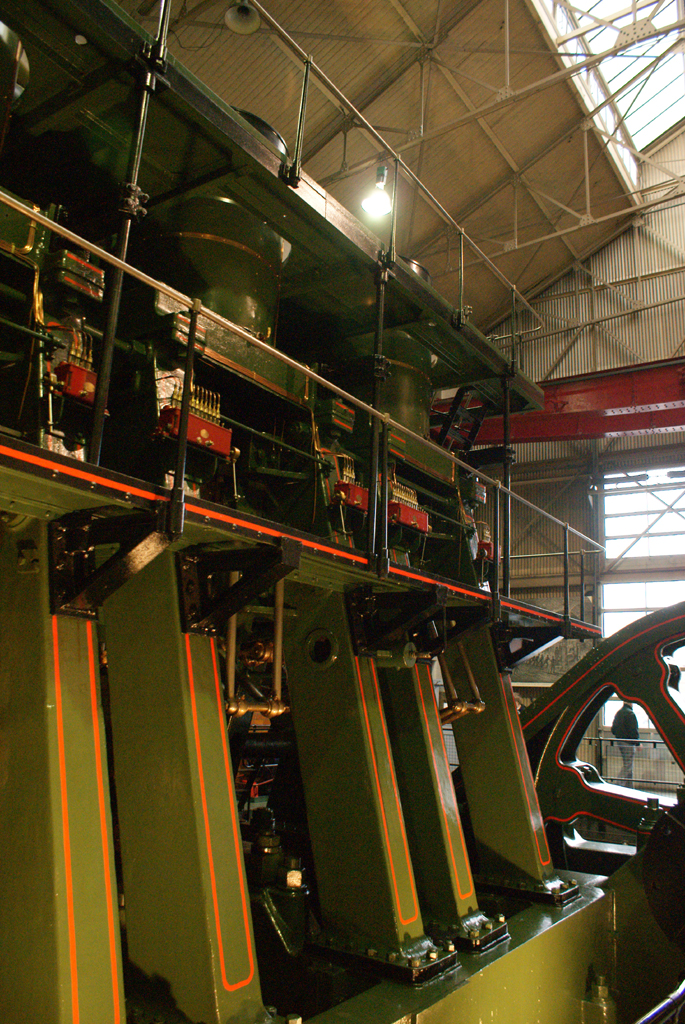River Don Engine on:
[Wikipedia]
[Google]
[Amazon]
 The River Don Engine is a 1904-built
The River Don Engine is a 1904-built
New Kelham Island Museum BlogKelham Island Museum page
Preserved stationary steam engines {{Industry-stub
 The River Don Engine is a 1904-built
The River Don Engine is a 1904-built steam engine
A steam engine is a heat engine that performs mechanical work using steam as its working fluid. The steam engine uses the force produced by steam pressure to push a piston back and forth inside a cylinder. This pushing force can be trans ...
used for hot rolling
In metalworking, rolling is a metal forming process in which metal stock is passed through one or more pairs of rolls to reduce the thickness, to make the thickness uniform, and/or to impart a desired mechanical property. The concept is simil ...
steel armour plate. It is a 3- cylinder simple engine of diameter, stroke. At its operating steam pressure of 160psi, it developed , and was able to reverse from full speed in 2 seconds. The rapid reverse was an essential feature of an engine used for rolling, as delays would result in cooling of the workpiece. This engine was one of four built to the same design, one going overseas to the Japanese Government
The Government of Japan consists of legislative, executive and judiciary branches and is based on popular sovereignty. The Government runs under the framework established by the Constitution of Japan, adopted in 1947. It is a unitary state, c ...
, one to John Brown's Atlas plant, and the destination of the final one being William Beardmore of Glasgow. It is claimed to be one of the most powerful steam engines ever built, and the most powerful remaining in Europe.http://www.simt.co.uk/collections/collections-2-1.html Sheffield Industrial Museums Trust
The River Don Engine worked for over 50 years at Cammell's mill before being moved first to British Steel's River Don plant (hence its name) and then in 1978 to its present home at the Kelham Island Museum, Sheffield. The engine was last used for commercial work in the 1970s, to roll out reactor shield plates for nuclear power plant
A nuclear power plant (NPP) is a thermal power station in which the heat source is a nuclear reactor. As is typical of thermal power stations, heat is used to generate steam that drives a steam turbine connected to a electric generator, generato ...
s.
The engine is normally regularly demonstrated at the museum, without load, and under 100 psi of steam pressure. It had to be taken out of service following the floods of July 2007, which extensively damaged the museum and parts of the engine, but was restored to working order in 2008.
References
External links
New Kelham Island Museum Blog
Preserved stationary steam engines {{Industry-stub